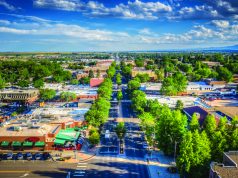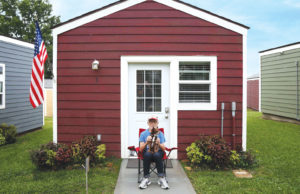ban on handguns, signaled Tuesday they were ready to extend gun rights
nationwide, clearing the way for legal attacks on state and local gun
restrictions.
While the court’s majority appears almost certain to strike down
ordinance and rule that residents have a right to a handgun at home,
the justices may decide nothing more. Instead, they said they need not
spell out this year the true scope of the Second Amendment and its
“right to keep and bear arms.”
Only
suburb, has a total ban on handguns. But many cities and states have
laws regulating who can have a gun and where they can take it, all of
which may be open to legal challenge once the court rules.
At one point during Tuesday’s argument, Chief Justice
“Well, maybe that’s right,” Roberts said. But he quickly added that question can be left for a future case.
The clear message from Tuesday’s argument is that
the court’s five-member conservative bloc believes the right “to bear
arms” is a fundamental right, like the freedom of speech, one that
cannot be unduly restricted by federal regulations, state laws or city
ordinances.
Two years ago, the court said reasonable regulations of guns are permitted in the
The tenor of Tuesday’s argument suggested it may take years of lawsuits
to draw a line between a gun owner’s right to have a gun for
self-defense and the government’s authority to set reasonable
regulations on guns.
Since 1982,
has enforced a strict ban on handguns, even for law-abiding residents
who wanted to keep one at home. The city’s lawyer argued Tuesday that
throughout American history, cities and states have enforced
restrictions on weapons, without much interference from federal judges.
“Firearms are designed to injure and kill,” said
But he ran into steadily skeptical questions from the court’s leading conservatives, who referred back to their decision in the
case. Two years ago, the justices in a 5-4 decision struck down a
similar handgun ban in the District and ruled for the first time that
the Second Amendment protects an individual’s right to have a gun for
self-defense.
Shortly after that decision, gun rights advocates sued to challenge
confront a simple question it had never answered: Did the Second
Amendment limit only the federal government’s authority over guns and
state militias, or did it also give citizens nationwide a right to
challenge their local and state gun laws?
Since the
v. Heller left that issue unresolved. But during Tuesday’s arguments,
the justices who formed the majority in the D.C. case said they had
already decided that gun rights deserve national protection.
Justice
“individual right to bear arms” is a “fundamental” right, like the
other protections in the Bill of Rights. “If it’s not fundamental, then
Heller is wrong,” he said, referring to the ruling in the D.C. case,
which he joined. Roberts and Justices
At one point in the argument, Justice
ago and said the Second Amendment was designed to protect a state’s
power to have a “well regulated militia.” Now, however, Stevens said
the court could rule that residents have a right to a gun at home, but
not a right “to parade around the street with a gun.”
A lawyer representing the
scoffed at that idea and opposed a “watered down version” of the Second
Amendment. Scalia also questioned that idea. In his opinion two years
ago, he described the right to bear arms as protecting a right to
“carry” a weapon in cases of “confrontation.” If so, this right would
not be easily limited to having a gun at home.
The justices will meet behind closed doors to vote
later this week on the case of McDonald v. Chicago. It may be until
late June before they issue a written ruling.
—
(c) 2010, Tribune Co.
Distributed by McClatchy-Tribune Information Services.














